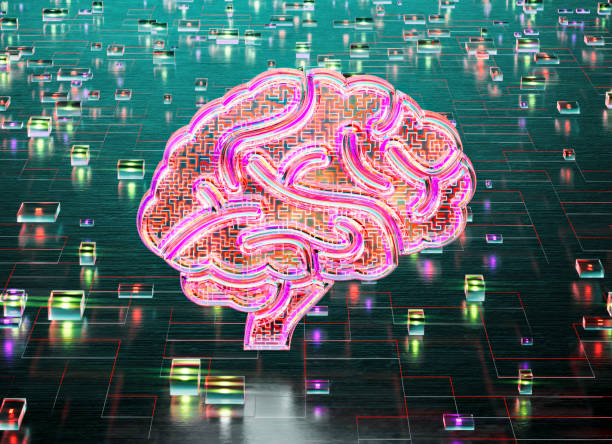AI has taken over. As you will have seen, it is everywhere and being used for pretty much everything at the moment. But, what are the latest trends, and how can you use AI to your advantage?
Artificial Intelligence (AI) and Machine Learning (ML) are transforming industries and reshaping how we interact with technology. As we navigate through 2024, several key trends are emerging, driving innovation and creating new opportunities across various sectors. Here’s a look at the most significant trends in AI and ML today.
1. Generative AI
Generative AI continues to make waves, with advancements in models that can create realistic content across different media. Tools like OpenAI’s GPT-4 and its successors are not just generating text but also creating images, videos, and music with increasing sophistication.
These technologies are finding applications in content creation, design, and even drug discovery. The ability to generate high-quality, diverse content is revolutionising creative industries and research fields. There’s so much potential.
2. AI ethics and governance
As AI systems become more integral to decision-making, the focus on ethical considerations and governance is intensifying. Concerns about algorithmic bias, privacy, and transparency are prompting organisations to develop robust ethical frameworks.
New regulations and standards are being established to ensure that AI technologies are used responsibly. This includes the implementation of explainable AI (XAI) techniques to make AI’s decision-making processes more transparent and understandable.
3. AI in healthcare
AI’s role in healthcare is rapidly expanding, with applications ranging from predictive analytics and personalised medicine to robotic surgery and telemedicine. Machine learning models are improving diagnostics by analysing medical images and patient data.
While AI-driven tools are aiding in drug discovery and treatment planning. AI’s ability to process vast amounts of data is enhancing patient care and operational efficiency in healthcare facilities. Making wait times so much shorter.
4. Autonomous systems
Autonomous systems, including self-driving cars and drones, are advancing significantly. Innovations in sensor technology, real-time data processing, and AI algorithms are making autonomous vehicles safer and more reliable.
In logistics, autonomous drones and robots are optimising supply chain operations, while autonomous systems are also being used in agriculture for precision farming. These have brought many practises into a more modern way of thinking.
5. AI and edge computing
The convergence of AI and edge computing is enabling real-time data processing closer to the data source. This trend is particularly important for applications requiring low latency, such as smart cities, industrial IoT, and autonomous vehicles.
Edge AI reduces the need for constant data transmission to cloud servers, enhancing responsiveness and efficiency while addressing privacy concerns. Having private and confidential data stored away without the risk of data breaches.
6. Human-AI collaboration
Rather than replacing human jobs, AI is increasingly designed to augment human capabilities. Collaborative AI systems are enhancing productivity in fields like software development, design, and research.
Tools like AI-driven coding assistants and design platforms are empowering professionals to work more efficiently and creatively, fostering a more synergistic relationship between humans and machines.
7. AI in creative industries
AI’s impact on creative industries is profound, with tools that assist in generating artwork, music, and writing. AI-powered platforms are helping artists and designers explore new creative possibilities and streamline their workflows.
In marketing, AI-generated content is being used to craft personalised messages and campaigns, making it easier to engage with audiences. Taking the pressure away from creatives, they can produce unique content every time.
8. Natural language processing (NLP) advances
Natural Language Processing (NLP) continues to evolve, with improvements in language understanding, generation, and translation. New NLP models are achieving higher levels of context comprehension, enabling more effective communication and interaction.
This includes advancements in chatbots, virtual assistants, and language translation services, enhancing user experiences across various applications. Making it easier to connect with people across the world and removing barriers once in place.
9. AI in finance
In the financial sector, AI is being leveraged for fraud detection, risk management, and personalised financial services. Machine learning algorithms analyse transaction patterns and market trends to identify anomalies and predict future movements.
AI-driven tools are also providing personalised investment advice and automating routine tasks, improving efficiency and accuracy in financial operations. Ensuring there is no room for human error. It’s taking away extra pressures.
10. Quantum computing and AI
Quantum computing is poised to revolutionise AI by solving complex problems that classical computers struggle with. While still in its early stages, quantum computing holds promise for accelerating AI algorithms and tackling challenges in optimisation.
Also, challenges are faced in, cryptography, and drug discovery. As quantum technology advances, it could unlock new possibilities for AI applications and drive further innovation. We could find new cures and processes that we never knew were possible.
11. AI-driven cybersecurity
Cybersecurity is becoming increasingly dependent on AI to combat sophisticated threats. AI-powered systems are capable of detecting and responding to cyberattacks in real-time by analysing vast amounts of data for suspicious patterns and anomalies.
This proactive approach enhances threat detection, reduces response times, and helps organisations stay ahead of emerging cyber threats. Adding an extra layer of protection against our normal, every day systems.
12. AI in education
AI is transforming education through personalised learning experiences and administrative efficiency. Adaptive learning platforms use AI to tailor educational content to individual student needs, while intelligent tutoring systems provide personalised support.
AI is also streamlining administrative tasks, allowing educators to focus on teaching and student engagement. Allowing individuals more access to toolkits that without AI they might not have had chance to experience.
13. AI in marketing and customer experience
Marketing and customer experience are being revolutionised by AI through personalised recommendations, targeted advertising, and customer insights. AI-driven tools analyse consumer behaviour and preferences to deliver tailored content and improve engagement.
Chatbots and virtual assistants enhance customer service by providing instant support and resolving queries efficiently. Customers aren’t forced into long waiting times to speak to a human. Instead, they can get answers quickly.
14. Sustainability and AI
AI is playing a crucial role in addressing environmental challenges and promoting sustainability. Machine learning models are optimising energy use, reducing waste, and monitoring environmental impact.
AI is being used in smart grids, renewable energy management, and climate modelling, helping organisations and governments make data-driven decisions for a more sustainable future. Helping us change huge global issues.
15. AI-Powered virtual and augmented reality
Virtual Reality (VR) and Augmented Reality (AR) are benefiting from AI advancements that enhance realism and interactivity. AI algorithms are improving the quality of virtual environments and enabling more intuitive interactions in AR applications.
These technologies are driving innovation in gaming, training simulations, and remote collaboration, offering immersive experiences and new ways to engage with digital content. People can really get involved in what they’re aiming to learn.
16. AI hardware innovations
The development of specialised AI hardware, such as neural processing units (NPUs) and AI accelerators, is driving advancements in AI performance. These hardware innovations are designed to handle the high computational demands of AI algorithms.
Improving speed and efficiency. As AI applications become more complex, the need for powerful and efficient hardware continues to grow. We will need to regularly evaluate and rexamine how processes work and whether they’re still running well.
17. Human-centric AI design
The focus on human-centric AI design emphasises creating systems that are intuitive, accessible, and aligned with human needs. This approach aims to enhance user experience and ensure that AI technologies are used effectively and ethically.
Human-centric design helps build trust in AI systems by making them more transparent, understandable, and user-friendly. The user should be at the center of the process. After all, the AI systems have been designed for them.
18. AI in legal and compliance
AI is increasingly being used in the legal sector for tasks such as contract analysis, legal research, and compliance monitoring. Machine learning algorithms can analyse legal documents, identify relevant case law, and automate routine tasks.
AI tools are also assisting organisations in staying compliant with regulatory requirements, improving efficiency and accuracy in legal work. Making legal practises more accessible for everyone. Gain advice without the huge price tag.
19. AI in supply chain and logistics
AI is transforming supply chain management and logistics through predictive analytics, automation, and optimisation. Machine learning models are forecasting demand, optimising inventory, and improving supply chain operations.
AI-driven solutions are enhancing route planning, warehouse management, and real-time tracking, leading to more efficient and resilient supply chains. Thereby, making warehouses run quicker and more effeciently.
20. Advancements in AI software development
The AI software development landscape is evolving with the introduction of new frameworks, libraries, and tools. Innovations in AI software are making it easier for developers to build, train, and deploy machine learning models.
These advancements are accelerating the development of AI applications and expanding the possibilities for leveraging AI in various domains. The latest trends in AI and machine learning are driving significant advancements across industries.
From healthcare and finance to creative arts and sustainability. As these technologies continue to evolve, they promise to bring about transformative changes, enhance efficiency, and create new opportunities. Staying informed about these trends is essential.







